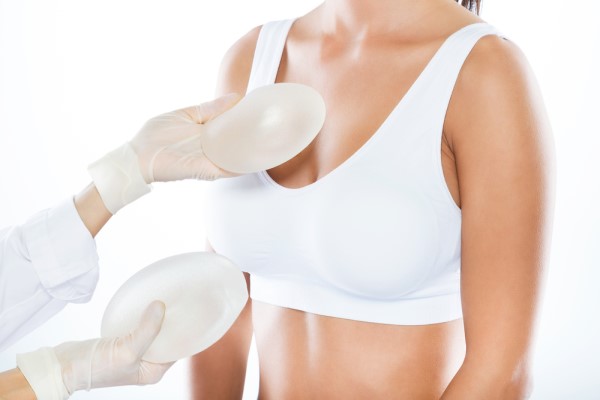What To Do After a Breast Augmentation

Breasts come in several shapes and sizes, from small to large, round to narrow, side set to teardrop, or asymmetrical. However, for those who are not satisfied with the breasts they were born with, breast augmentation offers a chance to change them. It can make some patients feel more confident. Others may use breast augmentation to rebuild their chest after undergoing treatment for medical conditions, such as a double mastectomy after being diagnosed with breast cancer.
Regardless of your reason for undergoing breast augmentation, you may wonder what the recovery process is like and what to expect after you get home. Post-operative care can make the difference between a quick, uneventful return to your normal routine and a return hindered by unexpected complications and infections. Continue reading to learn more about how to recover after the procedure properly and how soon you can return to your everyday life.
What to do after a breast augmentation
Immediately after
Once the anesthesia wears off, the patient may feel tight and sore around the surgical site. This is normal, as the body is beginning its natural healing process. However, they may also notice some bruising, swelling, nipple sensitivity, tingling, and general discomfort. Their plastic surgeon will likely write them pain medication to help alleviate pain and discomfort as they recover, as well as an antibiotic to prevent post-op infections. Cold compresses and over-the-counter medication (i.e., acetaminophen or ibuprofen) can also help manage pain and swelling.
The first 48 hours
In the first two days after breast augmentation surgery, patients should prioritize resting and relaxing as much as possible. They should try to sit, stand, and walk around by the evening of their surgery, as this helps prevent blood clots. Ice and other cold compress help with swelling and control discomfort or pain. When they sleep, the patient will need to sleep on their back for the following weeks. In addition, patients should seek some assistance from a family member or a friend to help them around the house, such as washing dishes, caring for kids or pets, and taking out the trash.
The patient should wear a support garment, such as a sports bra or elastic band (bandeau), as directed by the surgeon. In addition, some plastic surgeons recommend that their patient cleans the incision site and applies anti-bacterial ointment to prevent infection. Other surgeons prefer that the patient keep tape or a compression bandage on their surgical site.
While plastic surgeons usually do not use surgical drains during a standard breast augmentation, some patients may need them if there is significant bleeding during surgery. The surgeon will remove the drain one to two days after the procedure in their office. In cases where a patient has implants placed immediately after a mastectomy, the surgeon will remove the drain after a week or two. This is because a larger raw surface was created during breast tissue removal, and lymph fluid pathways were interrupted. Both factors increase fluid production and require a drain to remove it.
Week one
By this point in the recovery process, patients should see a decrease in swelling, bruising, and pain. They can return to work and other everyday activities if neither requires heavy lifting or strenuous activity. If a patient has young children, they should have a partner or loved one to lift them into a highchair or a crib. The patient should not lift anything heavier than a gallon of milk or laundry detergent, as it can interfere with the body's healing process and may cause injury to the surgery site.
Weeks two to four
During this step in recovery, patients will find a continued decrease in swelling, bruising, sensitivity, and discomfort in their chest. However, they may still have minor soreness and will need to continue to avoid strenuous exercise and sports for another few weeks. At this phase in recovery, patients can participate in a light exercise like running or speed walking, though they should wear extra support. It is also important to avoid bras with any underwire support as their breasts settle into their new position. Continue to wear a sports bra or another bra without an underwire until two or three months after the breast augmentation surgery.
Weeks four to eight
The swelling should be completely gone by this point in surgical recovery. The underlying muscles and tissues should also have healed. This point in the healing process allows the patient to have an accurate result of their surgery with minimal scarring. Most scarring will typically resolve and fade after a year following the surgery.
Start your journey to confidence today
Breast augmentation can be a life-changing decision for many people. However, recovery can greatly contribute to healthy and desired results, while a rough recovery can lead to post-operative infections and surgical failure. Therefore, it is important to listen to your surgeon before and after your operation, following their instructions to ensure an effective operation and fewer complications. If you have more questions or concerns about breast augmentation and the recovery period, call our office to schedule a consultation. We look forward to hearing from you.
Breast augmentation is available at Paul C. Dillon, MD Inc in the Schaumburg area. Visit https://www.paulcdillonmd.com or call (847) 429-3185 to schedule an appointment.
Check out what others are saying about our services on Yelp: Read our Yelp reviews.
Recent Posts
Hair restoration is a growing solution for women experiencing hair loss and thinning, offering a range of treatments designed to restore natural hair growth and enhance confidence. Whether due to genetics, hormonal changes, stress, or other factors, hair thinning can be a source of distress. Women looking for a reliable and effective solution to their…
Plastic surgery is a big deal, especially when done on the face. An individual's face is the first thing that gets noticed when interacting with others. One of the main facial areas worked on in plastic surgery is the nose. The nose is an important feature, as it sits in the middle of the face…
Laser hair removal is the go-to med spa treatment for achieving smooth, hair-free skin. Unlike shaving, waxing, or tweezing, this advanced technique offers a more lasting and effective solution to unwanted body hair. It targets hair follicles with high precision to prevent future growth, leaving skin feeling soft and smooth. If you are considering this…
Medical spa facilities offer a unique blend of advanced skincare procedures and overall wellness services, delivering a comfortable atmosphere where individuals can improve their appearance and nurture balance. By combining professional expertise with cutting-edge technology, these centers bridge the gap between classic spa offerings and clinically focused treatments. Patients can experience rejuvenation and confidence through…


